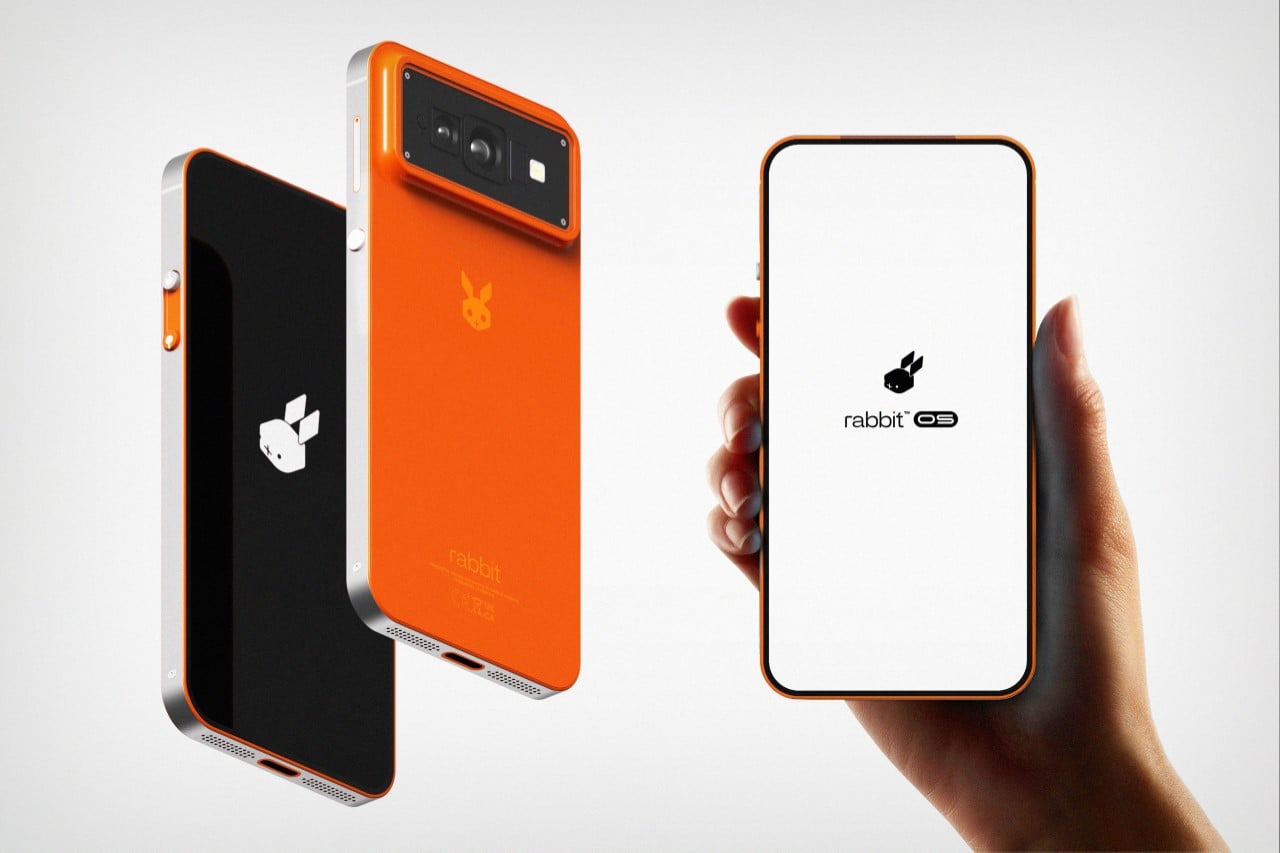
Smartphones aren’t dead, they’ve just stagnated. Over the years, companies have tried hard to develop ‘the next thing’, experimenting with folding phones, AI wearable pins, and even AR/VR headsets… but here’s what nobody’s realized yet. There’s nothing wrong with the smartphone’s format. It’s just lacking the next big technological leap. And that leap doesn’t mean redesigning the smartphone, it just means making it, well, smarter. After all, Spike Jonze’s film Her shows exactly this – a smartphone with a sentient AI that works flawlessly at interacting and executing tasks.
Rabbit’s first-gen R1 device was arguably the most discussed piece of tech at CES 2024. a surprising feat for a product from an absolutely brand-new company. Every blog, YouTuber, and tech writer seemed to be excited not just by the product’s pitch, but also its design and even its capabilities. Moreover, with its ultra-affordable price tag, the R1 felt like an absolute no-brainer… the only problem was the fact that it was yet another device you needed to carry with you.
Designer: Shreyansh Onial
Make no mistake, the R1 was still a brilliantly designed piece of gear. Crafted by the fine folks at Teenage Engineering, it was a work of art with how adorable, vibrant, tactile, and unmistakably iconic it looked and felt. However, its form factor brought about a few limitations that led a few tech experts to ask the question – why was the R1 an independent device? The answer was simple – making an R1 app wouldn’t be as impactful as designing a dedicated device to handle all your tasks. The trick worked, with the R1 selling out not once, but twice in just the week after CES. However, we aren’t here to talk about the R1… we’re here to ask another important question – what’s the logical next-step?
Young designer Shreyansh Onial seems to have just the right answer – a smartphone. Aptly named the Rabbit R2, this concept phone outlines the most sensible future for the Rabbit brand, and for smartphones themselves. Phones for too long have remained dumb devices that can only respond to limited queries like “What’s the temperature?” or “How old is Leonardo Di Caprio’s new girlfriend”, but with the R2 these limits simply get shattered. In 2007, Steve Jobs unveiled the app store, which brought about the biggest change phones had ever seen. With the R2, Rabbit brings that moment back to phones again, offering not apps, but a form of AGI (Artificial General Intelligence).
The Rabbit R2 looks like a smartphone, but underneath the surface, it’s so much more. It’s your own virtual assistant that does everything you need it to… while still offering the benefits of a smartphone. It comes with a screen, a camera, a USB-C port, and basic hardware, but also runs the ultra-powerful AI that made the Rabbit R1 so compelling just a few weeks ago.
Now, instead of carrying the R1 along with your phone, the R2 BECOMES your phone. Sure, it outwardly seems like quite a herculean task… but from Shreyansh’s POV (and mine too), a smartphone seems like the next logical step for Rabbit. Not an app, not a headset, not a watch, but a smartphone that offers the best of existing phone tech, alongside the most advanced assistant you’ve ever seen; capable of handling complex tasks simply through verbal cues and intuition. Of course, we’d have to find a new term for the R2 because the term smartphone has already been used to describe existing tech for the past 15 years. I’ll leave that creative endeavor to you…